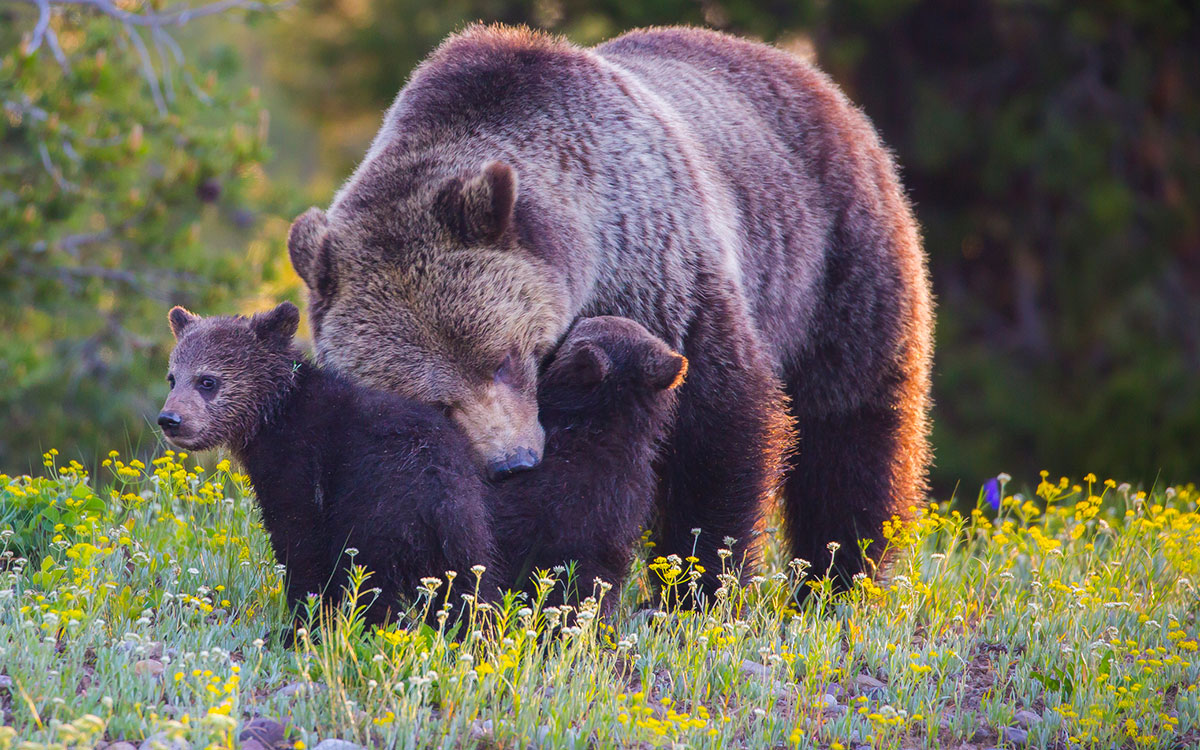Last week, the U.S. Fish and Wildlife Service (USFWS) announced it would begin a year-long process to consider whether to remove Endangered Species Act (ESA) protections for grizzly bears. It’s a result of petitions by the states of Montana, Wyoming, and Idaho, which want the protections gone, and could affect grizzlies from the Yellowstone region to Glacier National Park and beyond.
The move was, sadly, not a surprise. The three states have pushed for removing federal protections for grizzly bears for years. In 2017, grizzly bears in the Yellowstone region were briefly delisted before a federal court sided with Sierra Club and other plaintiffs represented by Earthjustice, and reinstated ESA protections in 2018. This stopped the states’ plans to take over grizzly bear management and initiate trophy hunts, but it hasn’t stopped them from trying again.
These states have shown that they cannot be trusted to manage these treasured native carnivores. In 2021, extreme anti-wildlife bills passed in Montana and Idaho to expand wolf trapping and allow hound hunting of black bears will cause injury and harm to grizzly bears as well. Other laws allow ranchers to kill grizzly bears with impunity. USFWS noted its concern about these threats in Friday’s announcement, saying “the impact of recently enacted state laws and regulations affecting these two grizzly bear populations is of concern and needs to be evaluated.”
And it hasn’t stopped there — the Montana legislature is considering a host of bills that would go even further. Montana Governor Greg Gianforte signed all of these extreme bills into law in 2021, and there’s no reason to expect he won’t do so again this year.
Montana’s recently-released draft grizzly bear management plan is also a major concern. The plan provides no guarantee of protection for dispersing grizzly bears who venture outside of designated “recovery zones” — making natural connectivity between bear populations, and re-establishment of a grizzly bear population in the vast wildlands of central Idaho, virtually impossible. The plan does not address the impact of the egregious laws noted above, and proposes several types of trophy hunts if bears are delisted, among other problems.
In its status review, the USFWS is required to evaluate whether the states have adequate regulations in place to protect the species from sliding back toward extinction. Clearly, this is not the case in the Northern Rockies.
We must not remove federal protections for grizzly bears. Since grizzly bears were listed under the Endangered Species Act in 1975, they have made a comeback in some areas — but they are still far from full recovery. In the Northern Rockies, Yellowstone grizzly bears remain isolated from any other grizzly bear populations, as they have been for 100 years — a significant threat to their long-term viability. The Cabinet-Yaak population in northwest MT has only 50-60 grizzly bears. There are no resident grizzlies in the Bitterroot recovery area in Idaho and Montana.
Grizzly bears are symbols of wildness, and they play a critical role in keeping natural systems in balance. They are culturally and spiritually significant to Indigenous peoples and many others around the world. They deserve our respect, and the highest level of protection — not to become someone’s trophy to hang on a wall.
